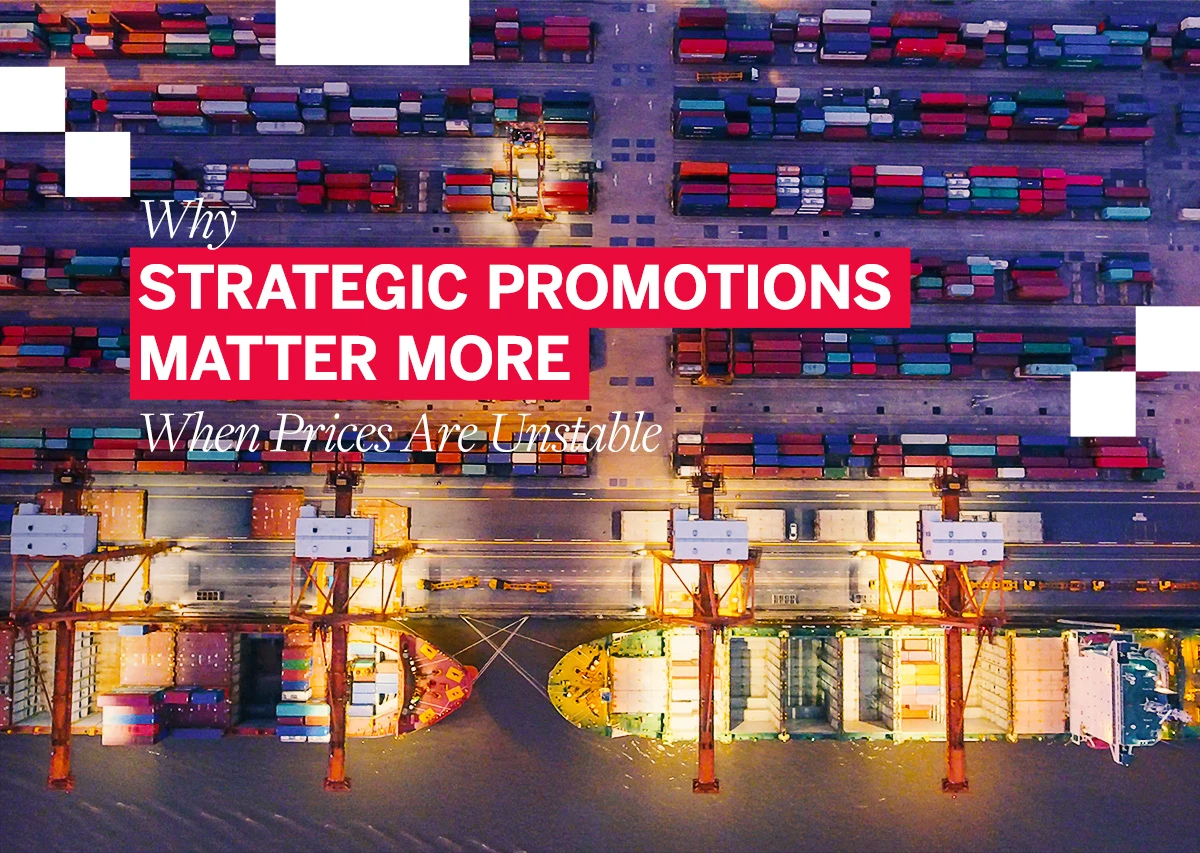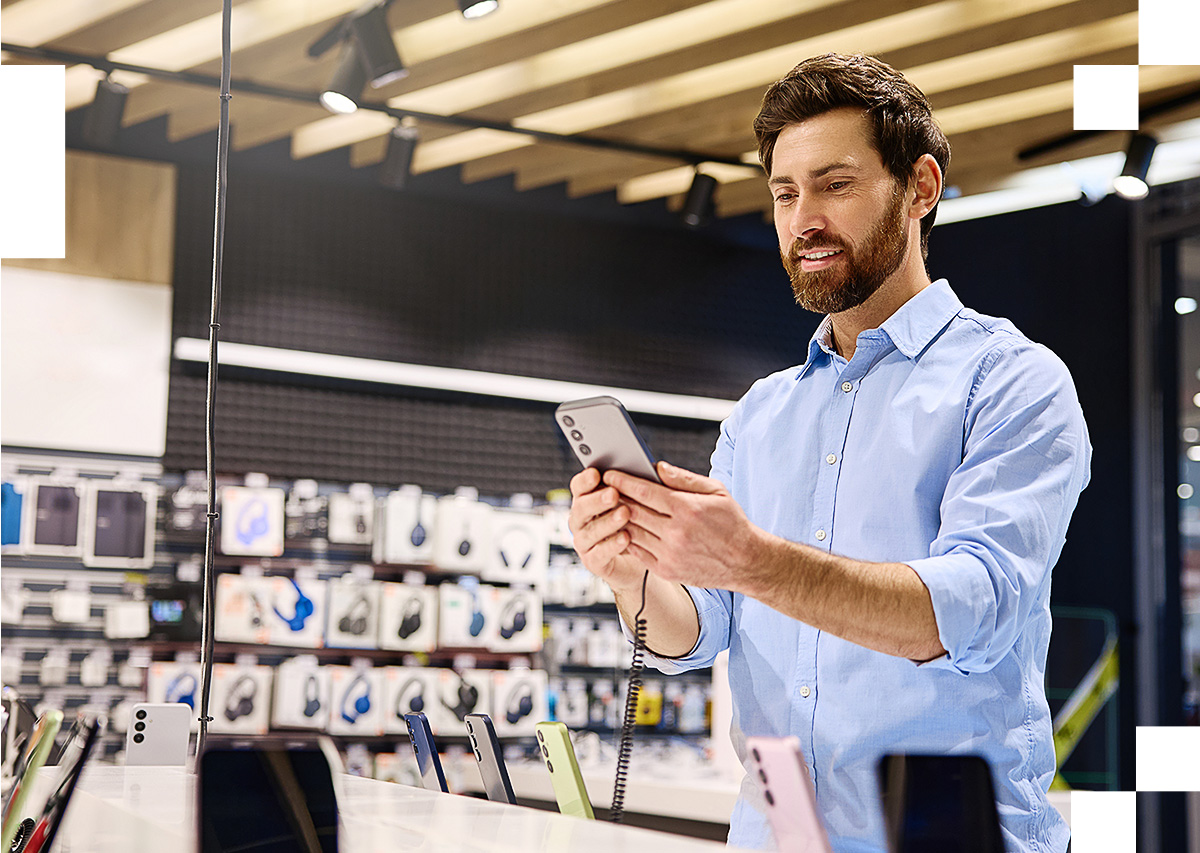When market conditions are turbulent and pricing becomes unpredictable, businesses face mounting pressure to protect margins, stay competitive, and keep customers engaged. From inflation to supply chain disruption and tariffs, cost fluctuations have become a growing challenge for brands across sectors.
In this environment, discounting isn’t always sustainable. That’s where strategic promotions come in. Promotions built with the right structure and purpose can offer an effective way to offset pricing uncertainty, without sacrificing profitability or brand value. They give businesses control, flexibility, and customer incentive all at once.
At Opia, we help brands navigate these challenges every day. Here’s how strategic sales promotions, like cashback and trade-in campaigns, can play a smarter role when price volatility is on the rise.

Table of Contents
- Why It Matters Now
- 1. Protecting Brand Value Without Resorting to Discounting
- 2. Driving Demand Even When Consumer Confidence Wavers
- 3. Adapting to Rapid Price Shifts with Agile Promotion Models
- 4. Supporting Retailers While Managing Price Pressures Globally
- 5. Offering Transparency and Control in an Unpredictable Landscape
- 4 Smart Promotion Types to Offset Tariff Pressures
- Why Opia?
- FAQs
- Ready to Build Promotions That Withstand Market Volatility?
Why It Matters Now
- Global inflation, tariffs, and rising costs are making pricing harder to predict.
- Retailers are asking for more margin support and commercial alignment.
- Consumer confidence is under pressure.
This is exactly when strategic promotions offer a smarter, more adaptable solution than blunt discounting.
1. Protecting Brand Value Without Resorting to Discounting
When prices rise due to tariffs or increased production costs, it’s tempting to slash prices just to stay in the game. But that can erode brand equity and reduce long-term profitability.
Instead, a targeted cashback or gift-with-purchase campaign allows you to maintain your RRP while offering extra value. This keeps pricing integrity intact, while still giving the customer a strong reason to buy.
Example: A smartphone brand impacted by rising component costs runs a cashback campaign to maintain RRP while driving sales volume.

2. Driving Demand Even When Consumer Confidence Wavers
In unstable markets, consumer hesitation grows. Promotions like Buy & Try or limited-time Instant Win campaigns help remove purchase friction by de-risking the experience or injecting urgency.
With Opia’s campaign strategies, brands can tap into buyer psychology while protecting margins.
Example: A home appliance brand offers a 60-day money-back guarantee on high-ticket products to encourage trial despite price sensitivity.

3. Adapting to Rapid Price Shifts with Agile Promotion Models
When tariffs change or supplier costs jump overnight, agility is key. Traditional pricing models struggle to keep up.
Promotions, however, offer flexible levers you can pull quickly. Opia helps brands quickly launch market-ready campaigns.
Example: A tech brand launches a tiered trade-in program that adjusts incentive value based on product category or market conditions.

4. Supporting Retailers While Managing Price Pressures Globally
Price instability doesn’t just affect the brand; it impacts channel partners, too. Strategic sales promotions can provide added value that supports both retailer sales and customer acquisition goals.
With our global infrastructure and fraud prevention systems, Opia delivers reliable, scalable campaigns across markets.
Example: A global electronics brand coordinates a multi-market promotion, offering gift cards and instant rewards through retail partners to soften price sensitivity.

5. Offering Transparency and Control in an Unpredictable Landscape
Discounting is often reactive. Promotions, when done right, are proactive.
Utilizing robust reporting, brands gain full visibility and predictability into their promotion performance, even in volatile markets.
4 Smart Promotion Types to Offset Tariff Pressures
When tariffs push up costs, businesses are often faced with a tough decision: absorb the hit or pass it on to consumers. But with the right promotion mechanics, you can offer real value, protect your margins, and avoid slashing your base prices.
Here are four proven tactics that help brands stay competitive in price-sensitive markets:
1. Cashback Promotions
A cashback promotion tied to the value of the tariff allows brands to absorb the cost without adjusting the shelf price. From the consumer’s point of view, they pay full price but receive a portion back, effectively reducing the impact of the tariff and maintaining perceived value.
For brands, cashback is more cost-efficient than traditional discounts. It only applies to customers who claim, which means a lower total cost, thanks to typical non-redemption rates. Campaigns of this type have been shown to cost up to 40% less than equivalent upfront discounts. They also preserve revenue upfront and allow businesses to fund rewards from future budgets, particularly valuable in high-volume or low-margin categories.
✅ Use when tariffs are directly increasing the retail price and you need to absorb the cost flexibly.
2. Digital Gift with Purchase (GWP)
Rather than reducing the base price, GWP campaigns offer added value, often in the form of a digital reward, to offset the perceived cost increase caused by tariffs. For example, including a digital voucher or bonus service helps maintain demand, even when tariffs put upward pressure on prices.
From a cost-control standpoint, digital gifts often carry low marginal costs but deliver strong perceived value. This lets businesses protect their pricing position and margin while still driving conversions and increasing average order value.
✅ Use when you want to counter price sensitivity with added value instead of lowering your RRP.
3. Trade-In Promotions
Trade-in programs allow customers to receive credit toward a new purchase by exchanging an older product. This reduces the out-of-pocket cost for tariff-affected goods, helping customers justify the purchase without needing a direct price cut.
Trade-ins are particularly effective in tech and electronics, where tariffs on imported components can significantly increase pricing. They also reinforce brand loyalty, support sustainability goals, and may generate secondary revenue streams from refurbished or recycled devices.
4. Satisfaction Guarantees & Extended Warranties
Higher prices driven by tariffs often make customers more cautious. Offering strong guarantees or extended warranties helps reduce that hesitation. Rather than lowering the price, these promotions build buyer confidence, making the tariff-inclusive cost feel more justified.
They are also a low-cost way to reduce return friction, improve perceived value, and maintain brand trust, especially for high-consideration products affected by tariffs.
✅ Use when price increases are unavoidable, and you want to protect conversion through reassurance.
Why Opia?
With over 7 million claims handled, $858 million+ in rewards distributed, and campaigns delivered in 40+ countries, Opia helps brands turn market uncertainty into opportunity.
Our promotion solutions are:
- Built to scale across regions, channels, and markets
- Designed with fraud protection and budget control in mind
- Supported by dedicated campaign managers from planning to reporting
When your pricing flexibility is limited, strategic sales promotions provide the levers to stay competitive, protect your margins, and deliver value that lasts.
FAQs
Why are promotions more effective than discounts in volatile markets?
Discounting reduces your product’s perceived value and erodes margin. Promotions maintain brand integrity while driving measurable customer action.
How can promotions help with tariffs or rising costs?
Promotions like rebates or cashback can offset extra costs for the customer, helping keep your pricing attractive without cutting into your profits.
How long does it take to set up a promotion?
It depends on the type of promotion, but some campaigns can go live in a couple of weeks with the right setup and support.
Do promotions work globally with different pricing rules?
Yes. We build localized, market-compliant promotions and manage claims in 24+ languages.
Can promotions support both direct and retail channels?
Absolutely. From D2C to retail and channel partner activations, we tailor solutions for every route to market.
Ready to Build Promotions That Withstand Market Volatility?
Talk to our team to design a promotion strategy that adapts to uncertainty while maximizing impact. Contact us or visit opia.com to learn more.

